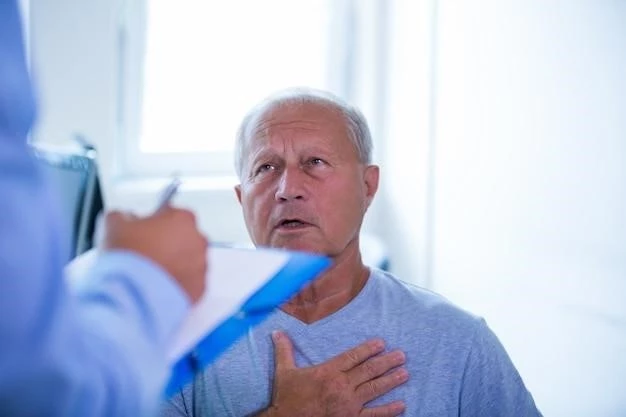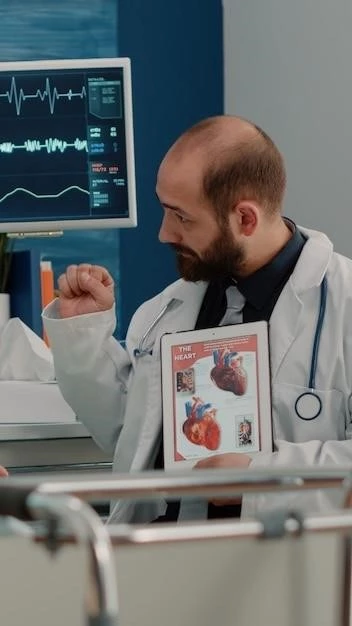Common symptoms of cardiac hydatid cysts include chest pain‚ shortness of breath‚ palpitations‚ and coughing up blood.
Overview of Cardiac Hydatid Cysts
Cardiac hydatid cysts are rare parasitic infections of the heart caused by the larval stage of Echinococcus granulosus. These cysts can lead to serious complications if left untreated and require prompt medical attention. The symptoms vary depending on the location and size of the cysts‚ with common presentations including chest pain‚ shortness of breath‚ and cardiac arrhythmias. Early detection and appropriate management are crucial for the successful treatment of cardiac hydatid cysts.
Common Symptoms
Cardiac hydatid cysts can manifest with a range of symptoms‚ including chest pain‚ dyspnea‚ hemoptysis‚ and palpitations. As the cysts grow and impede cardiac function‚ patients may experience heart failure‚ arrhythmias‚ and even sudden cardiac death. It is crucial to recognize these symptoms early to facilitate timely diagnosis and appropriate management to prevent further complications.
Treatment options for intracavitary expansion involve the surgical removal of cardiac hydatid cysts to prevent complications.
Definition
During intracavitary expansion treatment‚ the hydatid cyst inside the heart’s chambers is carefully removed via surgical intervention to prevent further growth or rupture‚ thus reducing the risk of complications such as embolism or cardiac failure. The goal is to ensure complete excision of the cyst while preserving cardiac function and preventing recurrence.
Treatment Approaches
The treatment approaches for intracavitary expansion of cardiac hydatid cysts typically involve the meticulous surgical removal of the cysts to prevent complications and ensure complete resolution. The surgery may require specialized techniques and close monitoring to minimize the risk of intraoperative complications and postoperative recurrence; The choice of treatment approach depends on the location‚ size‚ and number of cysts‚ as well as the overall cardiac health of the patient.
Surgical Procedures
The surgical management of cardiac hydatid cysts typically involves open-heart procedures such as cyst removal‚ repair of any damage to the heart tissue‚ and ensuring optimal cardiac function postoperatively. Specialized surgical techniques are employed to minimize the risk of cyst rupture and spread of parasitic material. Close monitoring during the surgery is crucial to prevent complications and facilitate successful cyst extraction‚ ensuring the best possible outcomes for the patient’s cardiac health.
Postoperative Care
After surgical management of cardiac hydatid cysts‚ meticulous postoperative care is essential to monitor the patient’s cardiac function‚ prevent infections‚ and ensure proper healing. Close observation for complications like arrhythmias‚ bleeding‚ or cardiac tamponade is vital during the recovery period. Follow-up appointments‚ imaging studies‚ and cardiac rehabilitation may be recommended to optimize the patient’s long-term cardiac health and overall well-being.
Potential Complications
Complications of cardiac hydatid cysts may include cyst rupture leading to anaphylaxis‚ embolism‚ cardiac tamponade‚ arrhythmias‚ heart failure‚ and systemic dissemination of Echinococcus larvae. Prompt recognition and appropriate management of these complications are crucial to prevent adverse outcomes and ensure the best possible prognosis for the patient.
Preventing cardiac hydatid cysts involves avoiding contact with infected dogs‚ proper hand hygiene‚ and regular deworming practices for pets. Early detection and treatment of human and animal infections‚ along with public health education on hydatid cyst prevention‚ are key strategies to reduce the incidence of this parasitic disease.
Diagnostic Techniques
Diagnosis of cardiac hydatid cysts may involve imaging modalities such as echocardiography‚ CT scans‚ and MRI to visualize cysts within the heart chambers. Serological tests like ELISA and imaging-guided biopsies may aid in confirming the diagnosis. Due to the complexities of diagnosing cardiac hydatid cysts‚ a multi-modal approach combining different diagnostic techniques is often necessary to ensure accurate and timely identification of the condition.
Challenges in Diagnosis
Diagnosing cardiac hydatid cysts presents challenges due to their rarity‚ varied clinical presentations‚ and the need for specialized imaging techniques to detect and localize the cysts accurately within the heart. Additionally‚ differentiating cardiac hydatid cysts from other cardiac conditions with similar symptoms can be complex. The reliance on a combination of serological tests and imaging studies underscores the importance of a comprehensive diagnostic approach in overcoming these challenges.
Preventive Measures
Preventing cardiac hydatid cysts entails measures such as avoiding contact with infected animals‚ timely treatment of dog tapeworm infections‚ and maintaining good personal hygiene practices. Public health campaigns on the risks of hydatid disease and the importance of regular medical check-ups can help raise awareness and curb the spread of the infection. Implementing preventive strategies is crucial in reducing the incidence of cardiac hydatid cysts and improving overall community health.
Public Health Initiatives
Efforts in public health initiatives for cardiac hydatid cysts focus on educational campaigns about the disease transmission‚ promoting hygiene practices‚ and advocating for regular deworming of animals. Collaborating with veterinary and healthcare professionals‚ establishing surveillance systems‚ and fostering community engagement are crucial steps in preventing the spread of the disease. By raising awareness and implementing effective public health strategies‚ the burden of cardiac hydatid cysts can be reduced‚ leading to improved overall health outcomes.
Current Research Trends
Recent advances in treating cardiac hydatid cysts focus on minimally invasive surgical techniques‚ drug therapies targeting parasite growth‚ and improved imaging modalities for accurate diagnosis and monitoring. Researchers are exploring novel treatment strategies such as targeted drug delivery and immunotherapies to enhance outcomes for patients with cardiac hydatid cysts. Collaborative efforts between clinicians and scientists aim to improve treatment efficacy and patient recovery‚ paving the way for enhanced care in the future.
Future Directions
Future research in treating cardiac hydatid cysts aims to develop more personalized treatment approaches‚ novel drug therapies‚ and advanced imaging techniques for early detection and targeted therapy. Advancements in genetic and molecular studies may lead to tailored treatments based on the patient’s genetic profile and parasite strain. Additionally‚ clinical trials investigating innovative treatment modalities and long-term outcomes are essential for refining treatment strategies and improving patient care in the management of cardiac hydatid cysts.
Rehabilitation Process
After cardiac hydatid cysts surgery‚ patients undergo a structured rehabilitation program focusing on physical therapy‚ cardiac monitoring‚ and lifestyle modifications to enhance recovery and restore cardiac function. The rehabilitation process may include exercise regimens‚ dietary guidance‚ and psychological support to promote overall well-being and improve the patient’s quality of life post-surgery. Close monitoring by healthcare professionals is essential to ensure a successful rehabilitation journey.
Long-Term Care
Long-term care for patients after cardiac hydatid cysts surgery involves regular follow-up appointments‚ monitoring cardiac function‚ and assessing for potential recurrence. Lifestyle modifications‚ adherence to medication regimens‚ and ongoing cardiac rehabilitation play a vital role in maintaining optimal heart health. Patient education on warning signs of complications and the importance of continued care is paramount for long-term management of cardiac hydatid cysts‚ promoting sustained well-being and quality of life.

